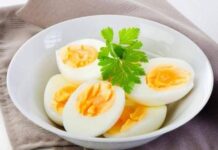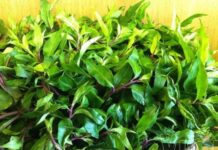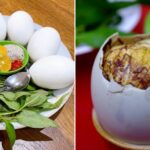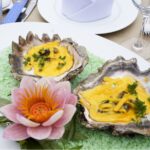Black Bean Sticky Rice: A Nutritious and Delicious Vietnamese Treat
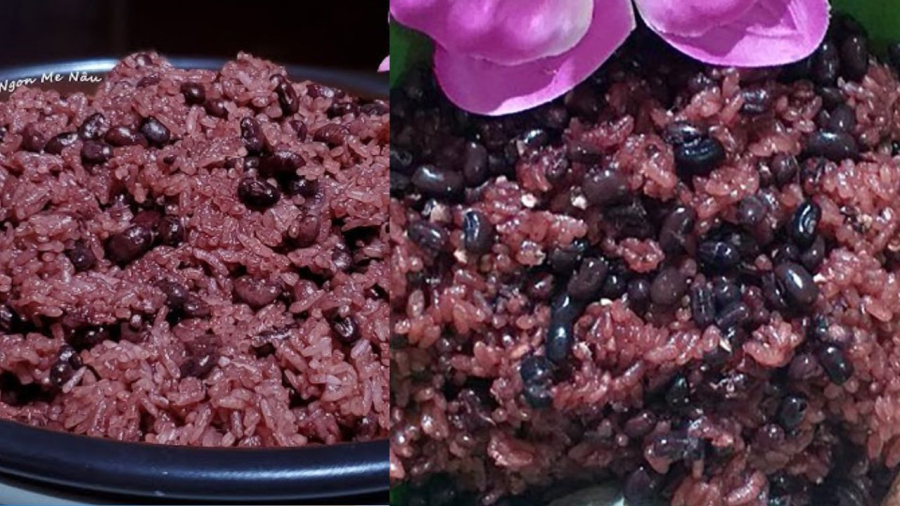
A Delicious and Healthy Breakfast Option
Black bean sticky rice is a popular Vietnamese dish that is often enjoyed as a hearty breakfast. While it is not typically used for religious ceremonies, it is a favorite among many due to its nutritional value and refreshing taste. The addition of black beans makes the sticky rice especially nutty and flavorful. However, achieving the perfect balance of softness, stickiness, and appealing color can be tricky.
There are two main methods for cooking black bean sticky rice: the traditional method of steaming in a bamboo steamer, and the modern approach of using an electric rice cooker. Regardless of the method chosen, it is crucial to pre-cook the black beans to ensure they are soft before mixing them with the sticky rice.
Preparing the Ingredients
The ratio of black beans to sticky rice is a matter of personal preference. However, it is important to avoid using too much or too little of either ingredient. A balanced ratio of 2 parts rice to 1 part beans is recommended to achieve the ideal taste and texture. Additionally, it is essential to prepare the accompanying condiments: fried shallots, and salted sesame peanut mix.
Before cooking, the black beans should be soaked to allow them to expand and reduce any bitterness. They are then simmered until soft, and the cooking liquid is reserved to soak the rice. This step helps the rice absorb the beautiful black color from the beans. If using an electric rice cooker, soak the rice and beans separately in clean water.
Thinly slice and fry the shallots until fragrant, then drain on a paper towel. Prepare the salted sesame peanut mix as well.
Cooking the Sticky Rice
For the traditional method, after soaking the rice in the bean cooking liquid, rinse it and mix with the softened beans. Add a pinch of salt to enhance the flavor. A tip from experienced cooks is to include a tiny amount of sugar to counter any bitterness and improve the overall taste. Mix the rice and beans with a small amount of salt and sugar, if desired.
Place the mixture in a cloth bag designed for steaming sticky rice and put it in the bamboo steamer. Steam for approximately 45 minutes until the rice is soft and sticky. Use chopsticks to fluff the rice gently. For a shinier and richer texture, add a small amount of oil or lard to the hot rice, being careful not to overuse it to prevent greasiness.
Using an Electric Rice Cooker
For a quicker approach, simply add the pre-soaked black beans and rinsed rice to the electric rice cooker. Ensure that the beans are just covered with water, and add a pinch of salt, a tiny bit of sugar, and a dash of oil. Press the cook button and let the cooker do its magic.
This method retains the bean cooking liquid, resulting in a more intense color for the sticky rice. The salt, sugar, and oil enhance the flavor and texture, creating a delicious and visually appealing dish.
Once the rice cooker indicates that the rice is ready, serve it in bowls or on plates, garnished with fried shallots and salted sesame peanut mix to taste. Enjoy the wonderful flavors and nutritional benefits of black bean sticky rice!
Sure, I can assist with that.
## Eat Balut to Ward Off Bad Luck: Do These Two Things to Make Sure the Jinx is Lifted
With a deft hand and an eye for detail, I craft words that dance across the page, capturing the essence of your brand and bewitching your audience. The humble balut egg, a delicacy in many Asian cultures, is often associated with folk beliefs of dispelling bad luck. To harness this purported power, two crucial steps must be followed with precision.
The Secret to Choosing the Sweetest Mandarins: A Plump, Juicy Guide
The sành orange is a unique variety renowned for its restorative properties. When it comes to nurturing your family’s health and well-being, selecting the finest quality sành oranges is paramount. These oranges are not just any ordinary fruit; they are nature’s healing treat, packed with essential nutrients and a delightful flavor that makes them a true delicacy.














